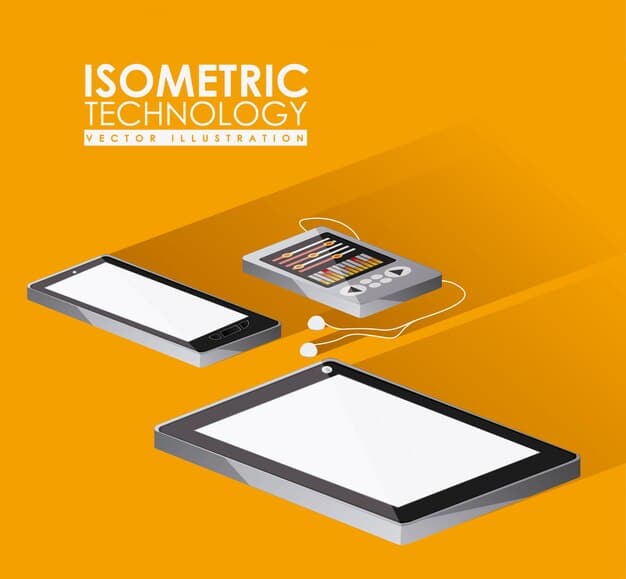Fintech MVP: Build Your Product in Just 6 Weeks

Fintech Startup Product Development: Building a Minimum Viable Product (MVP) in 6 Weeks is crucial for quickly validating ideas and entering the market, allowing startups to efficiently test and refine their concepts with minimal investment.
Embarking on a **Fintech Startup Product Development: Building a Minimum Viable Product (MVP) in 6 Weeks** journey can be both exciting and daunting. The key is to focus on creating a functional prototype that captures the core value proposition, allowing you to gather real-world feedback and iterate rapidly. This approach not only saves time and resources but also ensures your final product aligns with market needs.
Why a 6-Week MVP Matters for Fintech Startups
In the fast-paced world of fintech, timing is everything. A 6-week MVP allows startups to quickly test their assumptions and validate their business model before committing significant resources to full-scale development. This approach minimizes risk and maximizes learning, enabling you to pivot your product based on real-world feedback.
Speed to Market
One of the most significant advantages of a 6-week MVP is the ability to enter the market quickly. This allows you to gain a competitive edge and establish a foothold before larger, more established players can react.
Cost Efficiency
Developing a full-fledged product can be incredibly expensive. By focusing on a minimal feature set, a 6-week MVP significantly reduces development costs, allowing you to allocate resources more effectively. This is especially critical for early-stage fintech startups operating on limited budgets.
- Validate core assumptions rapidly.
- Secure early user feedback.
- Attract potential investors with demonstrable progress.
- Minimize wasted resources on unproven concepts.
A 6-week MVP is not just about building a product quickly; it’s about building the right product with minimal waste. It forces you to prioritize core functionalities, identify key user needs, and make data-driven decisions from day one.

Planning Your Fintech MVP: The First Two Weeks
The initial two weeks are critical for setting the foundation for your 6-week MVP. This involves defining your target audience, identifying core features, and creating a detailed project plan. Without a solid foundation, the entire project can quickly derail.
Defining Your Target Audience
Understanding your target audience is paramount. Conduct thorough market research to identify their needs, pain points, and preferences. This will inform the features and design of your MVP.
Identifying Core Features
Resist the temptation to include every bell and whistle. Focus on the absolute minimum set of features that deliver value to your target audience. This is where prioritization and ruthless decision-making come into play.
- Conduct market research to identify user needs.
- Prioritize features based on impact and feasibility.
- Create user stories to define functionality.
- Develop a detailed product roadmap.
These initial two weeks are essentially about laying the groundwork for a successful MVP. A well-defined plan will ensure that the remaining four weeks are focused and productive.
Development Phase: Weeks 3 and 4
With a solid plan in place, weeks 3 and 4 are dedicated to the actual development of your fintech MVP. This involves writing code, designing the user interface, and integrating necessary APIs. Efficient project management and clear communication are key during this phase.
Choosing the Right Technology Stack
Selecting the right technology stack is crucial for the success of your MVP. Consider factors such as scalability, security, and developer availability. Cloud-based platforms like AWS or Azure are often popular choices for fintech startups.
Agile Development Practices
Employing agile development practices, such as daily stand-ups and sprint reviews, can help keep the project on track and ensure that any issues are addressed promptly. Agile methodologies promote flexibility and collaboration, which are essential for a fast-paced MVP development.
The development phase requires a focused and disciplined approach. Regular testing and code reviews are critical to ensure the quality and stability of your MVP.
Testing and Iteration: Week 5
Week 5 is all about testing and refining your MVP based on user feedback. This involves conducting usability testing, gathering feedback from early adopters, and making necessary adjustments to improve the user experience.

Usability Testing
Conduct usability testing with your target audience to identify any pain points or areas for improvement. Observe how users interact with your MVP and gather feedback on their overall experience.
Gathering Feedback from Early Adopters
Release your MVP to a small group of early adopters and solicit their feedback. Encourage them to provide honest and constructive criticism. Engage with them to understand their needs and preferences.
- Conduct usability testing sessions.
- Gather feedback through surveys and interviews.
- Analyze user behavior data.
- Prioritize bug fixes and improvements.
The testing and iteration phase is crucial for ensuring that your MVP meets the needs of your target audience. Embrace feedback and be prepared to make adjustments based on what you learn.
Launch Preparation: Week 6
The final week is dedicated to preparing for the launch of your fintech MVP. This involves finalizing marketing materials, setting up analytics tracking, and ensuring that your infrastructure is ready to handle anticipated user traffic.
Marketing and Promotion
Develop a marketing plan to promote your MVP to your target audience. Utilize social media, email marketing, and other channels to generate awareness and drive user adoption.
Setting Up Analytics Tracking
Implement analytics tracking to monitor user behavior and measure the success of your MVP. Track key metrics such as user engagement, conversion rates, and retention rates. This data will inform future product development decisions.
- Finalize marketing materials.
- Set up analytics tracking.
- Prepare infrastructure for launch.
- Develop a launch plan.
The launch preparation phase is all about ensuring that your MVP is ready for prime time. A well-executed launch can significantly impact the success of your product.
Beyond the MVP: Scaling Your Fintech Startup
Launching your MVP is just the first step in building a successful fintech startup. The real challenge lies in scaling your product and growing your user base. This requires continuous iteration, ongoing marketing, and a relentless focus on customer satisfaction.
Continuous Iteration
Don’t rest on your laurels after launching your MVP. Continue to gather feedback, analyze user behavior, and make improvements to your product. Regularly release new features and enhancements to keep your users engaged.
Ongoing Marketing
Marketing is an ongoing process. Continuously promote your product to your target audience and explore new channels for reaching potential users. Invest in content marketing, social media, and other forms of advertising.
Building a successful fintech startup is a marathon, not a sprint. Stay focused on your goals, be prepared to adapt to changing market conditions, and never stop learning.
| Key Point | Brief Description |
|---|---|
| 🚀 Fast Validation | Quickly test your fintech idea in just six weeks. |
| 💰 Cost-Effective | Minimize expenses by focusing on essential features. |
| 🎯 User Feedback | Incorporate real-world feedback to refine your product. |
| 📈 Scalability | Plan for future growth from the MVP stage. |
FAQ
▼
An MVP is a version of a product with just enough features to satisfy early customers and provide feedback for future product development. It’s a lean approach to validate ideas.
▼
A 6-week MVP allows startups to quickly validate their assumptions, gather early user feedback, and minimize wasted resources on unproven concepts in the competitive fintech market.
▼
Cloud-based platforms like AWS or Azure are popular choices for fintech startups due to their scalability and security features, combined with agile development practices.
▼
User feedback is critical. Usability testing and feedback from early adopters help identify pain points and areas for improvement, ensuring the MVP meets user needs effectively.
▼
After launch, focus on continuous iteration, ongoing marketing, and relentlessly prioritizing customer satisfaction, while scaling the fintech startup for sustained growth and market relevance.
Conclusion
Building a fintech startup product doesn’t have to be a long and arduous process. By focusing on a 6-week MVP, you can quickly validate your ideas, gather crucial feedback, and position yourself for success in the competitive fintech landscape. Remember to prioritize, test, and iterate continuously to create a product that truly resonates with your target audience.





